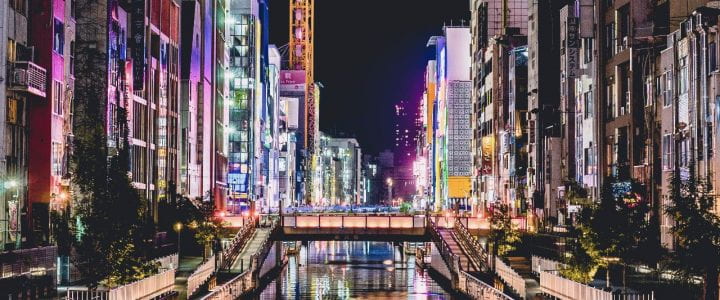NEW COLOMBO PLAN (NCP) 2020: SMART WATER SUPPLY AND RESILIENT INFRASTRUCTURE IN THE KANSAI REGION OF JAPAN
Project Background
Osaka Water Supply Authority (OWSA), a special local public entity, supplies tap water and industrial water to homes, schools, commercial enterprises and industrial customers as a bulk water supplier to 42 municipalities (excluding Osaka City) in the Osaka Prefecture. OWSA operates Japan’s largest single drinking water treatment plant as well as other drinking water treatment plants. OWSA also operates industrial water supply service, and acts as an industry partner.
Tap Water Supply:
OWSA supplies about 70% of the tap water to the residents of Osaka Prefecture (other than those in Osaka City).
– Daily Water Supply Capacity: 2,330,000㎥
– Annual Water Supply: Approx. 530 million ㎥
– Total Conduit Length: 565㎞
Industrial Water Supply:
OWSA directly supplies industrial water to about 440 companies in Osaka Prefecture for cooling, washing, and other industrial applications.
– Daily Water Supply Capacity: 800,000㎥
– Annual Water Supply: Approx. 105 million ㎥
– Total Conduit Length: 524㎞
More information about public water supply system in Osaka can be found here: https://aus01.safelinks.protection.outlook.com/?url=http%3A%2F%2Fwww.wsa-osaka.jp%2F&data=02%7C01%7C%7Cf62c11cb3ff940d9552808d77adfbd6e%7Cd1323671cdbe4417b4d4bdb24b51316b%7C0%7C0%7C637112973751829513&sdata=H%2Fx95HrdSSEzoo%2BpVs5sw9z3TdhxHAkOq3x6QlZaS6s%3D&reserved=0
OWSA shall engage RMIT students in a project to develop novel nano-photocatalytic materials for water treatment in Osaka Prefecture.
Students will undertake a two-week field trip to Osaka Japan, (20 June-3 July 2020) where they will experience state of the art water treatment process from OWSA and conduct some experiments with new photocatalysis materials at Osaka University.
Project Objective
Water purification process such as decomposition of organic substances in water is one of the most expensive and time-consuming processes required to provide drinkable water. Photocatalytic water purification has recently received considerable interest and is used in the Kansai region because it can remove organic substances in water, at low cost and with long durability.
This project aims to develop novel low-cost photocatalytic nanomaterials for water purification.
Deliverables
The deliverables of this project will be staged with an initial focus on data collection.
| Deliverable | Description | Initial Timing Estimate |
| Introductory Workshop | · Introduction to the program and its objectives
· Kick-off the project · Discuss next steps |
Late February 2021 |
| Project Plan | Student project plan and return brief | March 2021 |
| Capstone part A | · Identify and understand the types of organic contaminants contained in water at different locations in the world.
· Conduct experiments to synthesize novel metal oxide nanomaterials and photocatalysis experiments suitable to decompose the identified organic substrate. |
April and May 2021 |
| Field-trip | Site visit (20 June-3 July 2020) and experiments in Osaka:
· Week 1: Internship to learn water purification process in a local water company; · Week 2: Conduct of photocatalysis experiments in the labs at Osaka University |
June-July 2021 |
| Progress report | Progress report | July 2021 |
| Capstone part B | · Modifying materials structure to improve photocatalytic decomposition efficiently,
· Prepare a report on the project topic using literature review from semester 1, data analysis and field investigations. |
July to September 2021 |
| Draft report(s) | Draft report(s) | End September 2021 |
| Final report | · A presentation on the project report.
· Final report |
End October 2021 |
Governance:
This project will be managed through regular meetings between students, the academic supervisor and the project manager to ensure the work is undertaken in accordance with the project plan.
This project will be supervised by Professor Yasuhiro Tachibana.
Assumptions and Constraints:
Site specific data will be available and accessible to students on the project.
Risks and Minimisation Strategies:
Incomplete data collection resulting in inaccurate recommendations.
- This will be minimised by collecting as much data as possible from as many sources as possible early on.
- The highest resolution data available will be sourced to ensure accuracy.
Student attributes:
Students should have a passion for water and practical/environmental/chemical engineering, a broad understanding of water storage and treatment processes and (or a willingness to learn) and a desire to work in a fast moving and dynamic team.
The pre-requisite is to have completed an undergraduate physical chemistry or materials chemistry course.
Number of students:
This project can be available to chemical, environmental engineering and environmental science/chemistry students.
Total of 8 students are required for this project.
Application process:
- Students submit expression of interests including a CV and latest academic transcript to the Greenhouse and Sustainability Program.
- Shortlisted students will be invited to an interview
- Shortlisted students are subject to approval from the Japanese partner.
- Deadline for applications: 28/02/2020
Funding:
- Most of the travel costs will be covered by New Colombo Plan for eligible students[1].
- Students may be required to make a small contribution (approx. 500AUD) to cover costs.
[1] Undergraduate students are to be Australian citizens who have never received any NCP short-term grants before.

